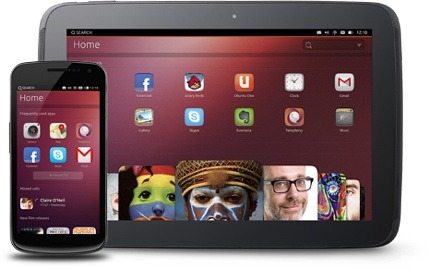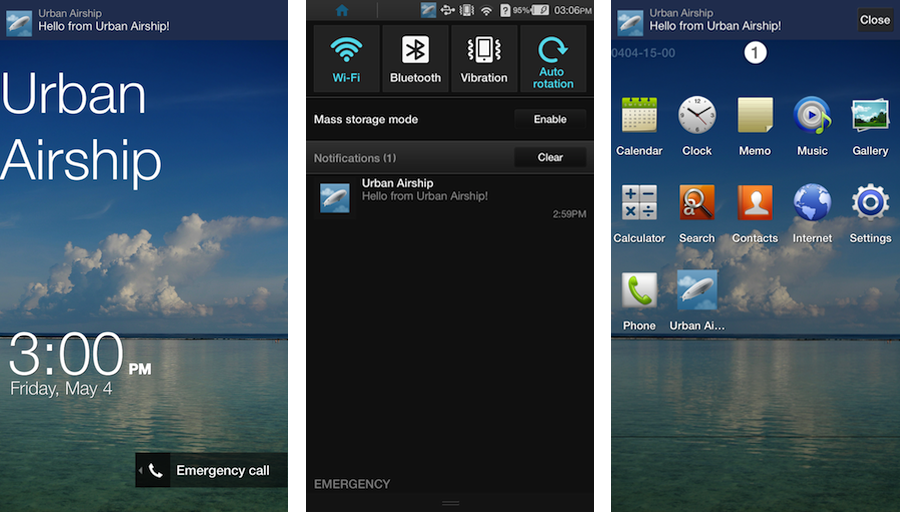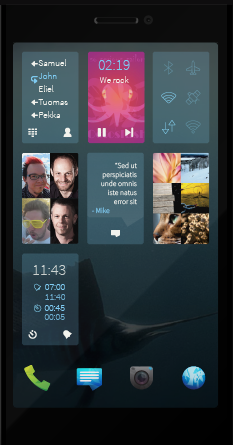Today, the cell phone market is booming. Everyone has a smartphone and more often than not, the operating system of these smartphones is either Google’s Android or Apple’s iOS. The iPhones and iPads have become very popular with the higher income group while almost everyone else has a Samsung, Sony, Micromax or some other Android phone. The other player that is looking to recover lost ground in the market is Nokia with its Windows-powered Lumia phones. These 3 OSs could be called the major stakeholders of the market today.
Technology, however, is the quintessential rolling stone. New players have emerged who could pose a threat to the dominance of the current rulers. Some of these are by new companies while others are by existing companies branching into phones and they seem to be good enough to take on the giants. Let’s meet the competitors:
Mozilla Firefox OS

Firefox OS is a Linux-based open-source operating system for smartphones and tablets; it has been developed by Mozilla. Firefox OS is designed to provide a "complete" community-based alternative system for mobile devices, using open standards and approaches such as HTML5 applications, JavaScript, a robust privilege model, open web APIs to communicate directly with cellphone hardware, and application marketplace.
Mozilla announced the launch of its HTML5-based operating system in 2012. The phones were launched in the South Americas in the last week of October 2013 and later in the European markets. The OS is aimed at the low-end smartphones and make websites work like apps.
The ZTE Open was launched as the first smartphone. The phone has gotten off to a modest yet promising start. The currently launched phone
is a basic smartphone and is good for someone looking to buy
their first smartphone. The reviews of the phone look good; the OS could really flourish if developed in the right direction.
Ubuntu Touch

Linux-based Ubuntu is already a very popular OS for desktops, and now Canonical has optimized the existing OS to work on phones as well. It is aimed at both budget and high-end smartphones.
Ubuntu Touch utilizes the same core technologies as the Ubuntu Desktop, so applications designed for the latter platform run on the former and vice versa. Additionally, Ubuntu Desktop components come with the Ubuntu Touch system; allowing Ubuntu Touch devices to provide a full desktop experience when connected to an external monitor. Ubuntu Touch devices can be equipped with a full Ubuntu session and may change into a full desktop operating system when plugged into a docking station. If plugged the device can use all the features of Ubuntu and user can perform office work or even play ARM-ready games on such device.
Mark Shuttleworth (founder of Canonical) announced on 31st October 2011 that by Ubuntu 14.04 Ubuntu will support smartphones, tablets, TVs and smart screens. The Ubuntu platform for phones was unveiled on, 2 January 2013, and the Ubuntu Touch Developer Preview was released on 21 February 2013.
The other 2 contenders are Tizen and Jolla Sailfish. Both these OSs are derivatives of MeeGo.
Tizen

MeeGo was a joint effort by Nokia and Intel. However, when Nokia pulled out of the project to go with Windows phones instead, Intel teamed up with Samsung to create Tizen. Tizen also is a merger of MeeGo and Bada (Samsung’s earlier OS).
Tizen is a Linux-based operating system for devices—including smartphones, tablets, in-vehicle infotainment (IVI) devices, smart TVs, and smart cameras.
Tizen provides a robust and flexible environment for application developers, based on HTML5. With HTML5's robust capabilities and cross platform flexibility, it is rapidly becoming the preferred development environment for mobile apps and services. The Tizen SDK and API allow developers to use HTML5 and related web technologies to write applications that run across multiple device segments.
Jolla Sailfish

Sailfish is the other byproduct of MeeGo, developed by Jolla (pronounced Yo-La), a Finnish company that comprises mostly Nokia ex-employees.
Sailfish is a Linux-based open-source OS.
The biggest features of Sailfish are its gesture recognition and multitasking. Various tasks, like opening a new browser window or changing the music track, can be completed with just a swipe of the screen. Also, Sailfish pins the active apps on the screen itself, so that the user does not have to delve deep into the menu to open them again. Another big draw of Sailfish is its ability to support Android apps. You can now run your favorite Android apps on your phone along with the native Sailfish apps.
These new OSs are preparing to challenge the current players in a big way, and they intend to come down hard on the current market. 2014 will probably see some of them launching their products and then we can know whether the markets favor them or reject them.



